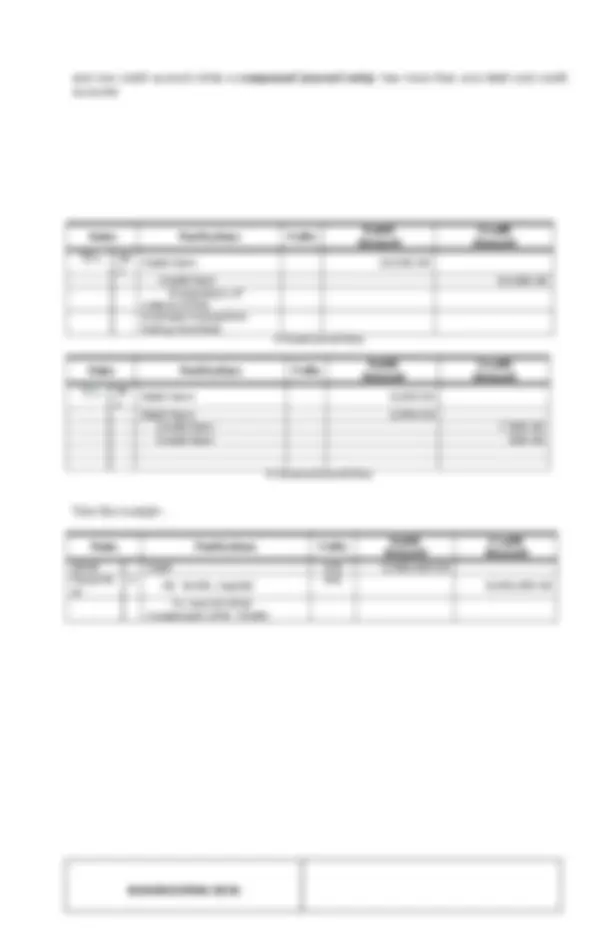



Study with the several resources on Docsity

Earn points by helping other students or get them with a premium plan


Prepare for your exams
Study with the several resources on Docsity

Earn points to download
Earn points by helping other students or get them with a premium plan
Community
Ask the community for help and clear up your study doubts
Discover the best universities in your country according to Docsity users
Free resources
Download our free guides on studying techniques, anxiety management strategies, and thesis advice from Docsity tutors
An overview of the accounting cycle, focusing on the journalizing process and the role of the journal in bookkeeping. It explains the importance of the accounting cycle, the steps involved, and the use of the general journal for recording transactions. The document also includes examples of simple and compound journal entries.
Typology: Schemes and Mind Maps
1 / 3

This page cannot be seen from the preview
Don't miss anything!


Learning Objectives: After reading this MODULE, YOU MUST be able to:
Flow Chart After this cycle is complete, it starts over at the beginning. Here is an accounting cycle flow chart. As you can see, the cycle keeps revolving every period. Note that some steps were repeated more than once during a period. Obviously, business transactions occur and numerous journal entries are recording during one period. Only one set of financial statements is prepared however. BOOKS OF ACCOUNT Generally speaking, there are two kinds of books used in bookkeeping and accounting. One kind is called the book of original entry and the other is called the book of final entry. A book of original entry is a book where the business transactions are first permanently recorded before they are entered in some other books for grouping and summarizing. There are several books of this kind and one of them is the journal (also called general journal ). The books of original entry are also called special journals. The General Journal Bookkeeping, in its simplest form, requires the use of two books. One of them is called general journal. The journal (also called general journal ) is a book of accounts where transactions of the business firm are recorded for the first time in chronological order of events. As such, the journal is known as a book of original entry. A page of the standard journal presented below consists of five columns, namely” the date , particulars , folio , debit and credit columns. The first column is where we enter the date of the transaction as they occur. The second column is where we enter the account titles and the explanation of the transactions. The third column is where we enter the account number (see CHART OF ACCOUNTS), which is used for cross referencing. The last two columns are the money columns where we enter the peso amount or value of a transaction (see DEBIT / CREDIT). Date Particulars Folio Debit Amount Credit Amount A page in the General Journal Journalizing and Journal Entries The process of recording business transactions in a journal (general journal), or special journals, is known as journalizing. Each entry made in the journal is called a journal entry. The journal entry may be a simple entry or a compound entry. A simple journal entry consists of one debit